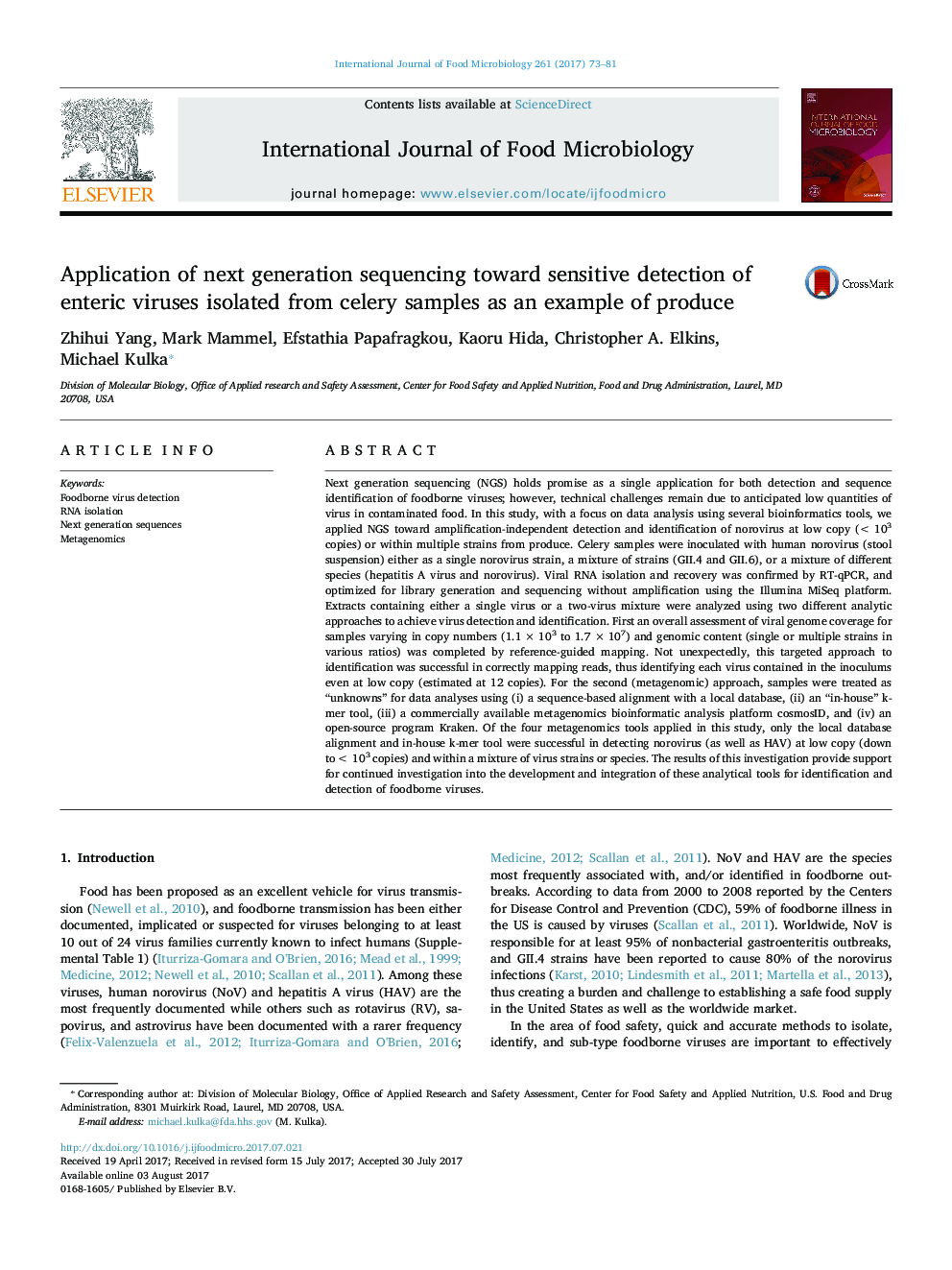| Article ID | Journal | Published Year | Pages | File Type |
|---|---|---|---|---|
| 5740579 | International Journal of Food Microbiology | 2017 | 9 Pages |
Abstract
Next generation sequencing (NGS) holds promise as a single application for both detection and sequence identification of foodborne viruses; however, technical challenges remain due to anticipated low quantities of virus in contaminated food. In this study, with a focus on data analysis using several bioinformatics tools, we applied NGS toward amplification-independent detection and identification of norovirus at low copy (<Â 103 copies) or within multiple strains from produce. Celery samples were inoculated with human norovirus (stool suspension) either as a single norovirus strain, a mixture of strains (GII.4 and GII.6), or a mixture of different species (hepatitis A virus and norovirus). Viral RNA isolation and recovery was confirmed by RT-qPCR, and optimized for library generation and sequencing without amplification using the Illumina MiSeq platform. Extracts containing either a single virus or a two-virus mixture were analyzed using two different analytic approaches to achieve virus detection and identification. First an overall assessment of viral genome coverage for samples varying in copy numbers (1.1Â ÃÂ 103 to 1.7Â ÃÂ 107) and genomic content (single or multiple strains in various ratios) was completed by reference-guided mapping. Not unexpectedly, this targeted approach to identification was successful in correctly mapping reads, thus identifying each virus contained in the inoculums even at low copy (estimated at 12 copies). For the second (metagenomic) approach, samples were treated as “unknowns” for data analyses using (i) a sequence-based alignment with a local database, (ii) an “in-house” k-mer tool, (iii) a commercially available metagenomics bioinformatic analysis platform cosmosID, and (iv) an open-source program Kraken. Of the four metagenomics tools applied in this study, only the local database alignment and in-house k-mer tool were successful in detecting norovirus (as well as HAV) at low copy (down to <Â 103 copies) and within a mixture of virus strains or species. The results of this investigation provide support for continued investigation into the development and integration of these analytical tools for identification and detection of foodborne viruses.
Keywords
Related Topics
Life Sciences
Agricultural and Biological Sciences
Food Science
Authors
Zhihui Yang, Mark Mammel, Efstathia Papafragkou, Kaoru Hida, Christopher A. Elkins, Michael Kulka,
